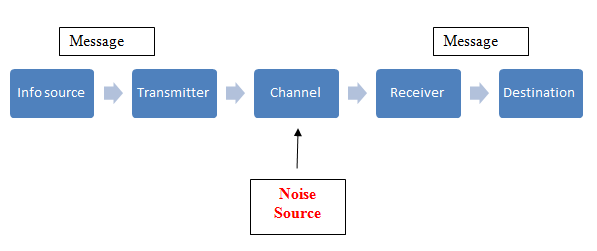
Leadership can be explained as “the relationship in which one person influences others to work together willingly on a related task to attain goals by the leader or group” (Sekhar, 2010, p.46). Nowadays, the importance of leadership may be greater than ever before due to high levels of competition and increasing difficulty in sustaining competitive advantage. John Adair’s (2011) eight functions of leadership presented below have great impact on team effectiveness and therefore they need to be conducted appropriately: Defining the task. Tasks need to be defined according to SMART principle and this abbreviation is interpreted as specific, measurable, achievable, realistic and time-bound. Planning. Plans need to incorporate provision for unforeseen circumstances, which has become an evitable part of modern markets. Briefing. It is one of the most important responsibilities of a team leader to specify roles and responsibilities of each individual team member and clarify points of concern for team members during the briefing. Controlling and coordinating. This function needs to be conducted in a regular and systematic manner. Evaluating. It is important for evaluations to be conducted in an objective manner and team members should be provided with an honest feedback. Supporting. Leaders need to support the team with all necessary resources, as well as, guidance and advice in relation to critical aspects of team projects. Motivating. Effective application of tangible and intangible motivational tools can be justly specified as one of the critical success factors of efficient leadership. Tangible motivational tools to be offered to employees include cash and other forms of material benefits. Alternatively, intangible motivational tools may include formally or informally praising individual employees or teams for their contribution, organising celebrations of group achievements etc. Setting an example. Leaders to be become role models in expressing the role of importance of organisational values and adherence…

There are differences amongst employees in multiple levels and these differences do affect learning styles and capabilities of employees. This argument can be illustrated more effectively with the application of Honey and Mumford (1982) learning styles. According to this model learning can be divided into four different groups on the basis of individual preferences or styles: activists, theorists, pragmatists and reflectors. Activists include specific type of individuals who best learn by doing. Theorists, on the other hand, attempt to understand theoretical frameworks and they like to analyse core ideas behind the phenomenon to be learned. Pragmatists tend to be highly practical individuals, and accordingly unlike theorists pragmatists are interested in application of knowledge in real-life environment. Reflectors are observers who prefer to adopt a holistic approach towards the subject of learning. The model of Honey and Mumford learning styles has important practical implications in organisational settings. Senior level managers need to identify learning styles of key employees in order to be able to facilitate their learning more effectively. For example, employees with theorist learning style need to be assigned with tasks of analytical nature. Alternatively, individuals with advanced pragmatist learning styles need to be appointed in positions where problem-solving skills are prioritised. However, it has to be acknowledged that identification of learning styles of each individual employee is a challenging task and therefore this strategy needs to be applied only in relation to key members of the workforce. References Honey, P. & Mumford, A. (1982) “Manual of Learning Styles” London

Dictionary defines quality as the standard of something as compared to other things of a similar nature (Oxford Dictionaries, 2014, online), but quality is a subjective term to be used in practical levels. Three major elements of quality can be specified as quality planning, quality assurance and quality control and it is important for the Company to deal with each of these elements appropriately. Quality planning relates to identification of quality standards that needs to be adhered. Quality planning is engaged in before the process of manufacturing. Quality assurance, on the other hand, is associated with the measures and procedures that ensure adherence to standard quality and these measures and procedures are applied during the process of operations. Quality control refers to initiatives to be used to improve the quality of products and services. Quality-related tools and methods can be divided into two broad categories: quality enabling tools and quality measurement tools. Elements of both categories can be integrated in specific approaches or philosophies towards quality management. Total Quality Management (TQM) and Six Sigma are the most popular approaches to quality management. TQM stresses the importance of total commitment to quality throughout the organisation and its main principles include customer-orientation, leadership, strategic planning, continuous improvement, application of statistical methods, training and development and co-operation. Six Sigma is an alternative quality-related philosophy and it adopts a data-based approach to eliminate defects. General Electric defines Six Sigma as a vision for quality that is equal to only 3.4 defects per one million opportunities. Adoption of Six Sigma approach can offer a set of significant advantages such as significant improvement of quality, cost savings through elimination of wastes and reduction in manufacturing process cycle time, as well as uniting all members of operations workforce around the idea of quality priority. It is crucially…

Importance of administration in managing operations, supply-chain management and quality is significant. Administration caters for information needs of organisations and also deals with developing and improving organisational processes, policies and systems. Operations management is associated with information needs at various levels i.e. information about the availability of stock, information about the quantity to be produced, information about the workforce availability etc. and lack or inaccuracies associated with any of this information may have negative effect on business performance, hence the importance of administration. Implementation of management initiative of producing upgraded product range for online sales in practice is going to further increase the importance of administration for Company’s operations management. For example, inventory management is going to be a major issue caused by the management plans of producing upgraded product range for online sales due to the lack of inventory space. This problem can be solved by applying Just-in-Time (JIT) principles. It has been noted that “the core philosophy of JIT is to provide an organisational framework to continuously reveal opportunities for elimination of non-value added activities” (Davis, 2009, p.43). High level of sophistication of information and communication technologies (ICT) offers attractive opportunities for administrative managers in terms of increasing the level of effectiveness of various administrative processes. For example, in case of JIT system in particular information about needed parts can be sent to relevant supplier automatically without human intervention whatsoever. References Davis, M. (2009) “The Fundamentals of Branding” AVA Publishing SA

Company operations have direct impact on business performance and internal measures of success can be applied in order to assess the nature of this impact. Great impact of operations on business performance can be explained by using the term of balanced scorecard, that consist of a set of measures used to assess four critical aspects of a business practice: financial performance, customer service, internal processes and innovation and learning. Most important operations-related internal measures of success within balanced scorecard include the amounts of waste and scrap, duration of time to produce a single unit, numbers of defected units, numbers of returned units, and the level of effectiveness of labour utilisation. Balanced scorecard has been widely praised by business scholars and practitioners for its advantages that include possibility to identify ‘best practices’ more effectively, opportunities to identify additional sources of competitive advantage, achieving alignment between key performance measures and organisational strategy, possibility view operations from holistic approach etc. Accordingly, acknowledgement of operations as one of the critical measures of success within the framework of balanced scorecard can be interpreted as indication of great impact of operations on business performance. Unless the quality aspect of operations is addressed in an effective manner, proposed management initiative of producing upgraded product range for online sales may have negative effects in internal measures of success at least in short-term perspective. In other words, on-site factory is already operating to near capacity with limited space for increasing inventory, and therefore attempts to increase the volume of output with disregard to quality, capacity and inventory is going to cause internal measures of success to decline which can lead to the overall decline of business performance.

Operations management can be defined as “a systematic approach to address all the issues pertaining to the transformation process that converts some inputs into output that are useful, and could fetch revenue to the organisation” (Davis, 2009, p.5). To put it simply, operations management for the Company comprises management of activities and processes that transforms raw materials into products. Operations management is inter-connected with many other business functions such as marketing, new product development, accounting and finance, human resources management (HRM), supply-chain management, as well as, technical functions of the business. For example, the quality of supply chain management for the Company directly effects operations management in a way that inbound logistics of raw materials of low quality is going to compromise the quality of the output. Similarly, operations management do have direct impacts of performance of marketing departments, because low quality of Company’s power garden tools is may contradict with marketing communication message of the marketing department with negative implications on Company’s brand image. Therefore, operations management needs to be viewed from a systematic approach as a part of overall organism known as the organisation. Activities involved in operations management for the Company include designing processes and products, controlling and purchasing the inventory, planning and control of operations and planning raw materials and production capacity. Implementation of the proposed management initiative of producing upgraded product range for online sales is going to have significant implications on all activities involved in operations management in strategic and tactical levels. In other words, the proposal is associated with significant increase in the volume of output despite the fact that the Company is operating to near capacity with limited space for increasing inventory. References Davis, M. (2009) “The Fundamentals of Branding” AVA Publishing SA

This article proposes a communication model for organisation in health industry. Communication is “a process of circular interaction involving a sender, receiver, and message” (Moran et al., 2007, p. 45) and the quality and level of communication plays an important role in running the operations by the health authority. Facilitation of communication in the health authority organisation in order to send messages to internal and external stakeholder can be explained by application of Shannon and Weaver’s (1949) model of communication which consist of five elements: information source, transmitter, channel, receiver and destination. Shannon and Weaver’s (1949) model of communication Adapted from Chandler (1994) Information source in case of the health authority relates to senior level management aiming to communicate information about changes in the organisation. Transmitter for the health authority relates to press office in case of communication with external stakeholders. In internal communication, on the other hand, line level managers and immediate supervisor may serve as transmitters of messages sent by stop management. Channels available for the health authority to transmit its messages include but not limited to the official website of the organisation, press releases in local and national media, newsletters etc. Receiver can be represented by media for external communications as a wide range of media platforms can discuss official press releases of the health authority organisation thus, causing the message to reach its destination. Destination for communication message represents individuals and parties for whom the message is intended. Noise is an important factor in this model of communication as it can interfere in communication process potentially causing messages to be misunderstood. Therefore, it is important for the health authority management to be proactive in terms of eliminating or at least minimising the noise. References Chandler, D. (1994) “The Transmission Model of Communication” Available at: http://www.aber.ac.uk/media/Documents/short/trans.html…

This brief article discusses information management processes for health authority focusing on information communication technologies. Information is a vital tool for the health authority and its effective management is the most basic responsibility of administrative management. Information management process for the health authority may include the following stages as proposed by Akwetey (2011): 1. Collecting information. In health authority organisation information can be collected from application forms and other internal and external sources. Moreover, primary data collection can be initiated with the use of surveys, focus groups, experiments etc. 2. Processing information. This stage can be greatly assisted by the application of relevant analytical software and the level of sophistication of such software is rapidly increasing. 3. Analysing the information. Information on its own does not represent value in practical levels; therefore information needs to be transformed into knowledge through critical analysis. 4. Acting upon the information. This last stage in information management process is associated with developing recommendations according to analyses of information and application of recommendation in practice. Dramatic development of information technology and intensive integration of internet in increasing range of organisational processes has increased the level of convenience and effectiveness of each stage in information management process. Specifically, information and communication technologies (ICT) represent an effective platform to be used in data collection, processing of information, and data analysis. ICT applications can be divided into two categories: standard and specialised (Shane, 2008). Standard applications can be used in a wide range of industries and purposes and they include word pressing applications such as Microsoft Word and Text Document, database software such as Access, Oracle etc. Specialist ICT applications, on the other hand, are applications that are industry-specific. Specialist applications available for the health authority include Electronic Patient Record Keeping (EPR), Medical Use Expert System (MYCIN) and others. References Akwetey,…

Administration can be defined as “activities involved in managing a business, organisation, or institution” (Macmillan Dictionary, 2014, online). Main differences between administration and management relate to objectives, skills and competencies and the level of involvement in producing products and providing services. Specifically, managers are involved in producing products and providing services in a direct manner, whereas administrators are involved indirectly through developing relevant policies, aims and objectives. Administrative management primarily deals with information needs of managing organisations. Due to the recent restructuring of the health authority and resulting increase of geographical scope of operations encompassing four towns the need for timely and accurate information has increased for senior management. Accordingly, this change has further increased the importance of administrative management for the health authority. Core management functions include planning, organising, staffing, leading and controlling and administration plays an important role in facilitation of these functions in an effective manner. For example, as part of staffing management function health authority senior management need to ensure that employees in new sub-offices in four towns have common set of skills and capabilities for similar positions. This objective can be achieved by application of administrative measures that include formulation of relevant policies and devising effective procedures. Generally, effective administration can benefit the health authority in achieving its organisational objectives in three ways: data processing, office services and systems analysis and design. Data processing can be specified as an important aspect of health authority operations due to increasing relevance and range of data such as patient information, information about suppliers and employees, relative performance of sub-offices etc. Effective administration can assist in data processing practices of the health authority in a range of ways discussed further below in greater details. Office services represent another critical area for the health authority since the organisation has expanded…

According to Horn (2013), although many people have certain opinions about emotional intelligence, the numbers of definitions of the term may be equal to the numbers of authors who addressed this issue. Emotional intelligence has been defined as “the potential to be aware of and use one’s own emotions in communicating with oneself and others and to manage and motivate oneself and others through understanding emotions” (Wharam, 2009, p.11). Alternatively, Bradberry and Greaves (2009) define emotional intelligence as the ability of individuals to understand, express and control their emotions. According to Barrows and Powers (2009) as taken from Oxford English Dictionary hospitality means “the perception and entertainment of guests, visitors or strangers with liberality and good will” (Barrows and Powers, 2009, p.4) Chakraborty and Konar (2009) identify four important attributes of emotions as intensity, brevity, partiality and instability. Intensity relates to the extent of strengths of emotions. Brevity, as an important attribute of emotion relates to its duration. Partiality, on the other hand, is a target such as person or object towards whom or which emotion is directed. Lastly, instability relates to transient psychological and physiological processes experienced by people. According to Bradberry and Greaves (2009) emotional intelligence accounts for 58% of performance for all kinds of jobs. However, Bradberry and Greaves (2009) do not explain methods used to obtain this specific figure and this fact compromises the value and validity of their claim. Moreover, according to Bradberry and Greaves (2009) the levels of personal competence are based on self-awareness and self-management, whereas social competence is based on social awareness and relationship management. Four components of emotional intelligence Source: Bradberry and Greaves (2009) According to Sparrow and Knight (2009) emotions are associated with physiological change such as acceleration of the rate of heartbeat, changes in blood pressure and facial expressions,…
